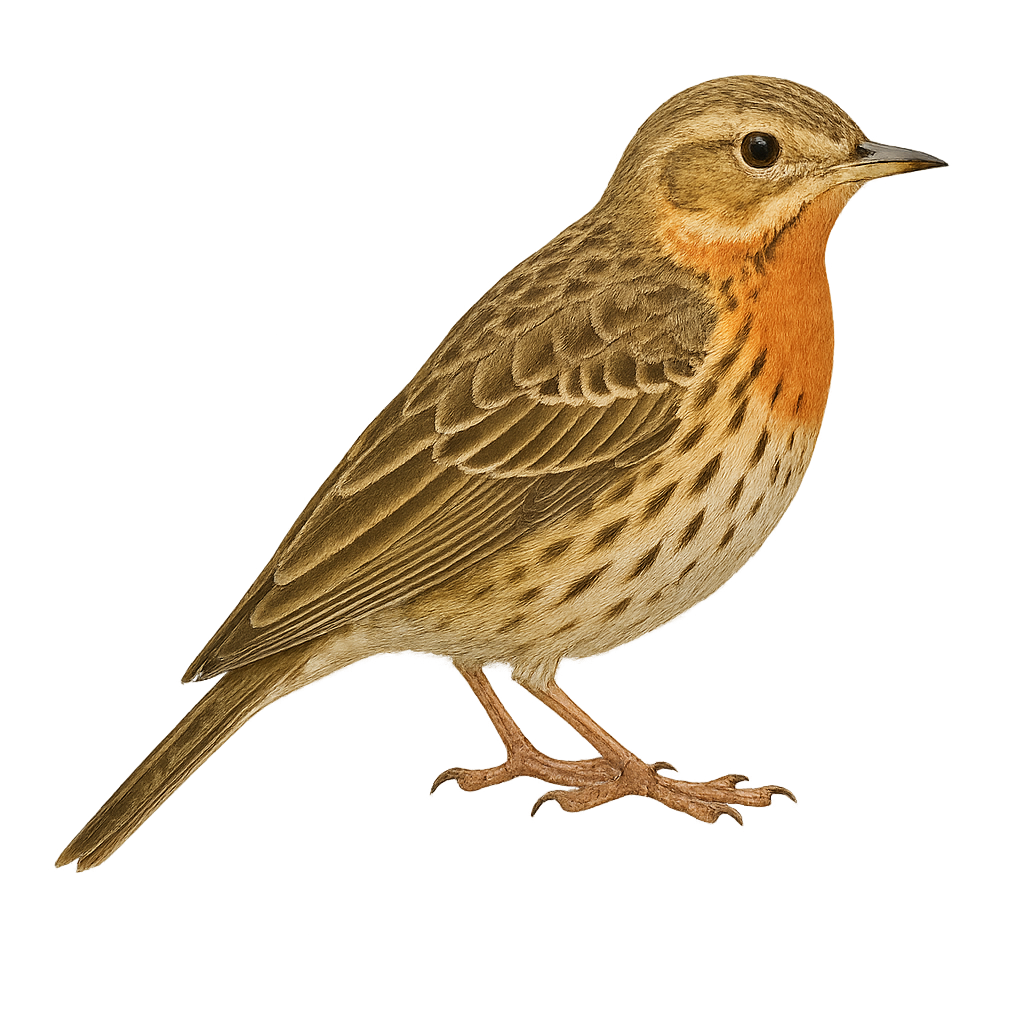Your wildlife photography guide.
Explore the red-throated pipit in detail, study its behavior, prepare your shots.
Where to observe and photograph the red-throated pipit in the wild
Learn where and when to spot the red-throated pipit in the wild, how to identify the species based on distinctive features, and what natural environments it inhabits. The WildlifePhotographer app offers tailored photography tips that reflect the red-throated pipit’s behavior, helping you capture better wildlife images. Explore the full species profile for key information including description, habitat, active periods, and approach techniques.
Red-throated Pipit
Scientific name: Anthus cervinus

IUCN Status: Least Concern
Family: MOTACILLIDAE
Group: Birds
Sensitivity to human approach: Suspicious
Minimum approach distance: 10 m
Courtship display: May to June
Incubation: 12-14 jours
Hatchings: June to July
Habitat:
Tundras, wet meadows, marshes
Activity period :
Primarily active during the day, with peak activity in the morning and late afternoon.
Identification and description:
The Red-throated Pipit is a small migratory bird belonging to the Motacillidae family. It is easily recognizable by its reddish throat, which is particularly visible in males during the breeding season. This passerine measures about 14 to 15 cm in length, with a wingspan of 25 to 27 cm. Its plumage is brownish with dark streaks on the back and flanks, allowing it to blend effectively into its natural habitat. It primarily inhabits tundras and wet meadows in summer, while migrating to warmer regions in winter, notably in Africa and South Asia. Its song is a melodious trill often heard in the vast expanses where it nests.
Recommended lens:
400 mm – adjust based on distance, desired framing (portrait or habitat), and approach conditions.
Photography tips:
To photograph the Red-throated Pipit, it is advisable to use a telephoto lens of at least 400mm to capture precise details without disturbing the bird. Look for open areas like wet meadows or tundras where they are often active. Be patient and discreet, as these birds can be suspicious. Early morning or late afternoon, when the light is soft, is the best time to get well-lit images. Use a tripod to stabilize your camera and avoid blurring.
The WildlifePhotographer App is coming soon!
Be the first to explore the best nature spots, track rutting seasons, log your observations, and observe more wildlife.
Already 1 439 wildlife lovers subscribed worldwide

